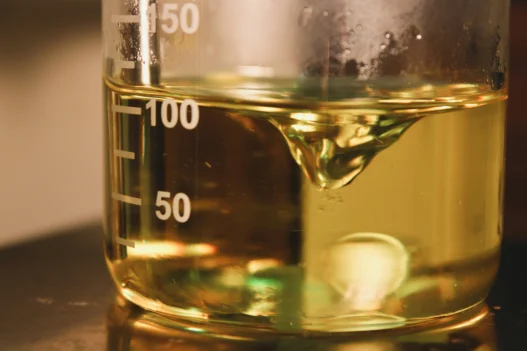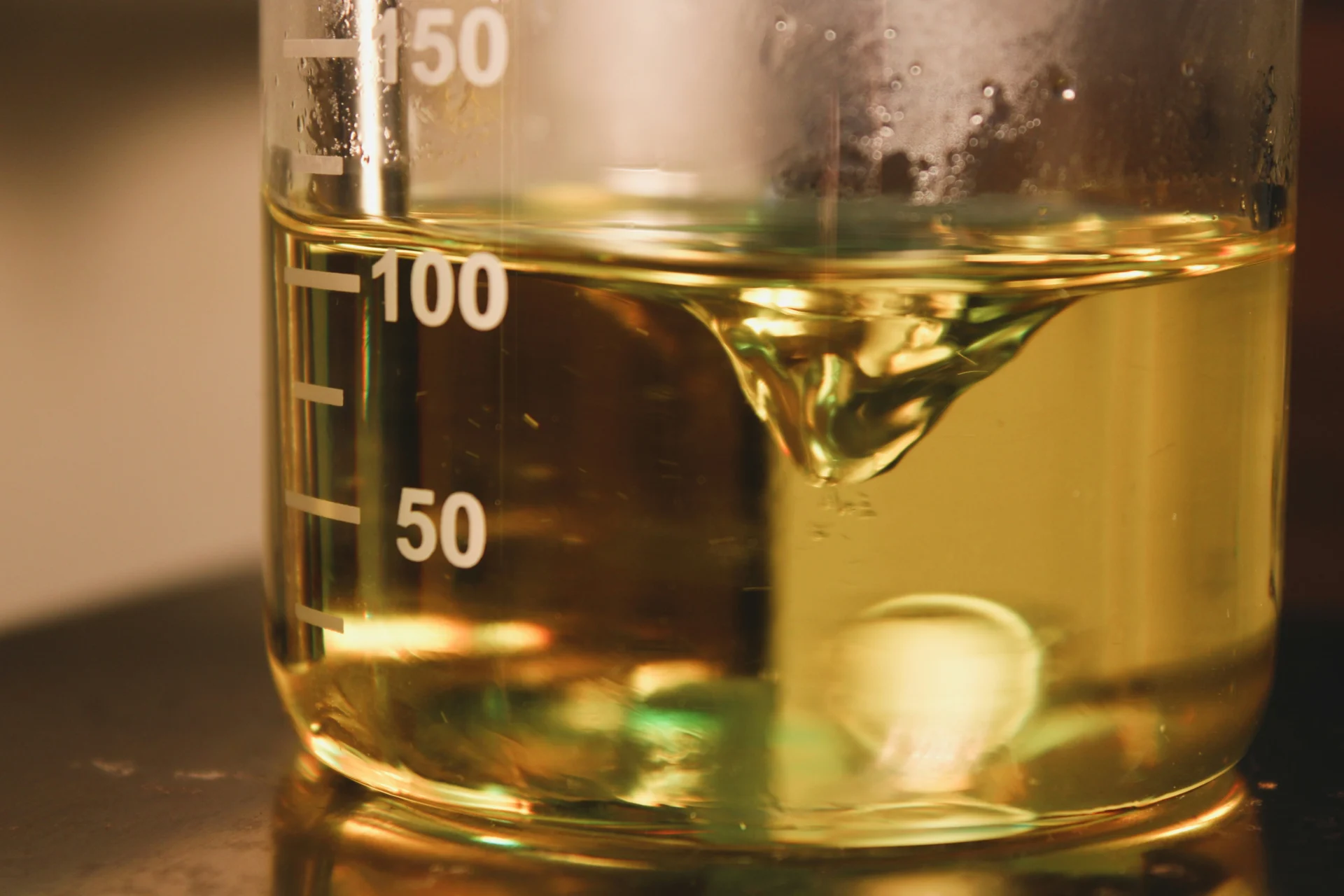Guaiazulene is a naturally occurring compound derived from chamomile oil, known for its deep blue color and anti-inflammatory properties. While traditionally used in skincare products for its calming and soothing effects, its relevance extends beyond beauty routines. As a potent antioxidant, Guaiazulene has been investigated for its potential in treating various skin conditions, such as acne and eczema. Additionally, its anti-inflammatory properties make it a valuable ingredient in products aimed at reducing redness and irritation. In everyday life, Guaiazulene serves as a versatile ingredient in skincare formulations that promote healthy and balanced skin.
Table of Contents:
- 💡 Commercial Applications
- ⚗️ Chemical & Physical Properties
- 🏭 Production & Procurement
- ⚠️ Safety Considerations
- 🔬 Potential Research Directions
- 🧪 Related Compounds
💡 Commercial Applications
Guaiazulene, a blue-colored organic compound, is primarily used in commercial and industrial applications due to its vibrant color. It is commonly utilized as a blue colorant in cosmetics, such as skincare products and makeup. Guaiazulene is also used in the manufacturing of certain medical devices and inks due to its unique coloring properties.
In the realm of drug and medication applications, Guaiazulene has gained popularity for its anti-inflammatory and skin-soothing properties. It is commonly used in topical ointments and creams to help reduce redness and inflammation caused by various skin conditions, such as acne or eczema. Guaiazulene is also found in certain types of eye drops to help relieve eye irritation and redness.
⚗️ Chemical & Physical Properties
Guaiazulene is a blue crystalline compound with a distinct odor commonly used in cosmetics and pharmaceuticals due to its anti-inflammatory properties.
With a molar mass of 184.24 g/mol and a density of 1.052 g/cm3, Guaiazulene is comparable in molar mass to glucose and slightly less dense than water.
Guaiazulene has a melting point of around 31-32°C and a boiling point of around 294-295°C, making it more comparable to the melting point of butter and the boiling point of water.
Guaiazulene is sparingly soluble in water and highly viscous, similar to honey or molasses in terms of solubility and viscosity.
🏭 Production & Procurement
Guaiazulene is a naturally occurring hydrocarbon that is commonly extracted from the essential oil of chamomile flowers. The production process involves steam distillation of the flowers, followed by the separation and isolation of the Guaiazulene from the oil. High purity Guaiazulene can be obtained through subsequent purification steps.
Guaiazulene can be procured from specialized suppliers of natural ingredients or essential oils. It is typically available in varying concentrations and forms, such as pure oil or diluted solutions. The procurement process may involve placing orders directly with manufacturers or through distributors who specialize in natural compounds.
Transporting Guaiazulene requires careful handling due to its sensitivity to light and air. The compound is often packaged in dark glass containers to protect it from degradation. Shipping methods may vary depending on the quantity and concentration of Guaiazulene being transported, with special attention paid to temperature control during transit to maintain its stability.
⚠️ Safety Considerations
Safety considerations for Guaiazulene involve its potential hazards and precautions that should be taken when handling this substance. Guaiazulene poses a risk of skin irritation and eye irritation if it comes into contact with the skin or eyes. It may also cause respiratory irritation if inhaled, and ingestion may result in gastrointestinal irritation.
Hazard statements for Guaiazulene include “Causes skin irritation,” “Causes serious eye irritation,” and “May cause respiratory irritation.” These statements highlight the potential dangers of exposure to this substance and emphasize the importance of taking precautionary measures to prevent harm.
Precautionary statements for Guaiazulene include “Wear protective gloves/eye protection/face protection” and “Avoid breathing dust/fume/gas/mist/vapors/spray.” These statements advise individuals on how to protect themselves from potential hazards associated with Guaiazulene and stress the importance of using proper safety equipment and ventilation when handling this substance.
🔬 Potential Research Directions
Potential research directions for Guaiazulene include investigating its therapeutic properties in treating various skin conditions such as inflammation, irritation, and redness. Studies could explore the mechanisms by which Guaiazulene interacts with skin cells and whether it can help improve overall skin health. Additionally, further research could examine the stability and formulation of Guaiazulene in skincare products to enhance its effectiveness.
Another potential research direction for Guaiazulene is its potential antioxidant properties and its ability to protect the skin from environmental damage. Studies could focus on exploring the antioxidant activity of Guaiazulene and its potential role in preventing premature aging caused by free radicals. Furthermore, research could investigate the synergistic effects of Guaiazulene when combined with other antioxidants in skincare formulations.
Further research on Guaiazulene could also delve into its potential anti-bacterial and anti-inflammatory properties for treating acne and other skin conditions. Studies could aim to elucidate the mechanisms by which Guaiazulene exerts its anti-bacterial effects and whether it can help alleviate symptoms of inflammatory skin conditions. Moreover, research could explore the safety and efficacy of Guaiazulene as a treatment option for various dermatological conditions.
🧪 Related Compounds
One similar compound to Guaiazulene based upon molecular structure is Chamazulene. Chamazulene is a bicyclic sesquiterpene that is characterized by a deep blue color, similar to Guaiazulene. It is known for its anti-inflammatory and antioxidant properties and is found in chamomile essential oil. The molecular structure of Chamazulene also contains a fused 5-membered and 7-membered ring system.
Another compound with a similar structure to Guaiazulene is Thujene. Thujene is a common monoterpene found in a variety of essential oils, such as cedarwood and cypress oil. It is characterized by its unique bicyclic structure, similar to that of Guaiazulene. Thujene has been studied for its antimicrobial and anti-inflammatory properties.
One more compound that shares a similar molecular structure with Guaiazulene is Neryl acetate. Neryl acetate is a natural compound commonly found in citrus essential oils, such as lemon and lime. It is a monoterpene ester with a bicyclic structure, similar to Guaiazulene. Neryl acetate is known for its pleasant citrus aroma and is often used in perfumery and flavoring industries.








